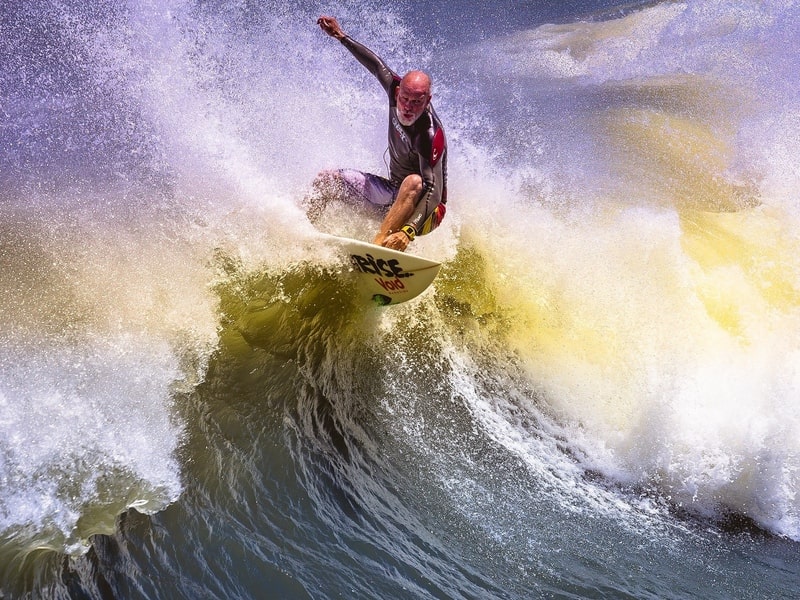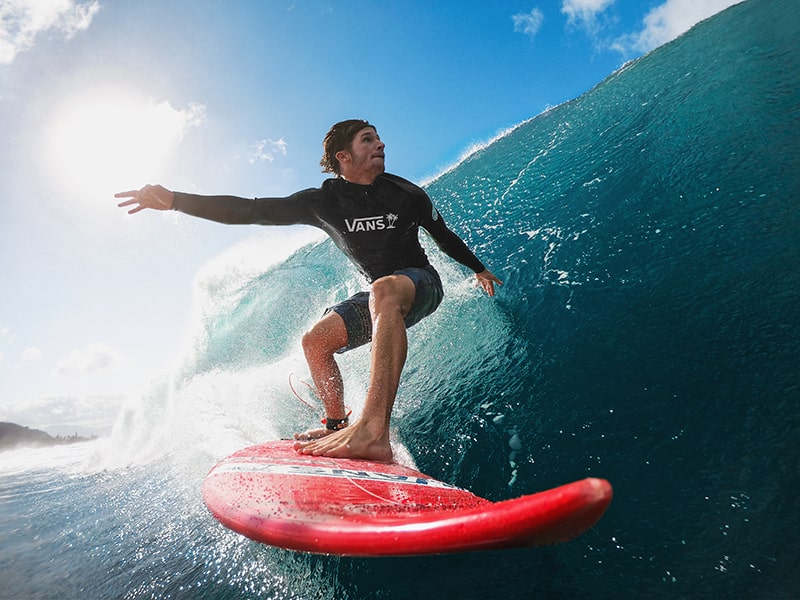
Surfboard (how to choose)
Those who have never surfed are convinced that there is no fundamental difference in which board to catch the wave on. The main thing is to stay on it and enjoy the water walk.
In fact, a surfboard is important for both experienced and novice athletes. Weight, maneuverability, size – all this should be taken into account when choosing a surfboard. It is also worth remembering that good surfing depends on external factors – spots (places for surfing), wave level, wind direction.
Experienced surfers at a glance at the sea or ocean surface can determine what kind of board they need. Beginners who can’t afford to have several surfers in their arsenal at once should choose the one that will be the safest and will help them master the basics of sliding on the water.
Surfers for beginners
Those who are still planning to get on the board, instructors usually advise to use a softtop. It is usually 6 to 8 feet long, and the top has a special rubber coating that softens the impact of the fall. Beginners will have to fall a lot and often, so it is better to protect yourself from abrasions and bruises in advance.
The softtop has good stability and maneuverability, which is not the case with other beginner’s boards. This option is a real find for those who want to conquer the wave and experience the rush of adrenaline.
A sapphireboard is the ideal choice for those who feel insecure on the water, fear falling and do not chase for speed. This board can be mastered even by a child – it is so simple and easy to use. Wide and long sapphireboard is very stable, it resembles a platform with rounded noses.
Learn to surf on such a board can be in any spot regardless of the height of the waves and their presence in general. Surfing on these boards is often the starting point of surfing in Bali and other resorts for those who want to learn this sport without the help of an instructor.
Longboard (or raspberry) is the “grandfather” of all modern surfers, it is on such boards in the 70s, conquered the waves of those who considered themselves pioneers in this sport. The length of the board is at least 8 feet, it is wide enough and heavy enough, has a high stability, but can not boast of maneuverability.
Ideal for those who want to learn the basics of surfing under the guidance of an instructor in such a way as to later move to a lighter and more maneuverable board.
What to choose for an experienced surfer?
It all depends on personal preferences and the conditions in which the board will be used. Of course, the ideal option is to have several surfers for different spots and weather conditions. But first you should try each of the options to understand which board you feel most confident and comfortable on.
Fanboard – the name of the board itself suggests that riding on it should bring joy and pleasure. This is really the case provided that the fan is used on a medium height wave. For small waves such a board is not suitable, as it will be difficult to get a drive from riding.
And catching big waves on a fanboard is not safe.
The length of such a board is from 6 to 8 feet, it is thick enough, wide enough and has rounded noses. It has good maneuverability, but at the same time allows you to maintain stability and not to strain when you need to saddle another wave.
Gan is a surfboard that every athlete who loves to conquer high waves should have in his arsenal. It can be up to 10 feet long and its pointed nose makes it easy to climb a crest and fall down at great speed, enjoying the ride. Due to the excellent maneuverability of the gangs allows you to develop a huge speed, but not everyone can survive on such a surf.

Fish, on the contrary, is chosen by fans of calm and measured surfing. Thanks to its shape with a pointed nose and a split tail, such a board is really similar in shape to a fish, but surfers often call it a bunny, because it is designed to conquer small waves. They ride it, as a rule, kneeling.
Thanks to the novice maneuverability it will be difficult to master such a board, but experienced surfers use the chip to sharpen all sorts of tricks on the water. For example, turns or spins. This board is considered to be the smallest among its brothers – its length is no more than 5-6 feet.
Mini-maliba is another kind of surf, which is good for those who have already mastered the basics of this sport. This board looks like a long board, but it is shorter, easier and easier.
By reducing the size of the mini-Maliba is characterized by excellent maneuverability and can develop a good speed. Usually as a simulator it is used by those who are preparing for the transition to surf for professionals who require strength and skill.
Professional surfboards
Those who really want a thrill on the water, and surfing skills allow you to get them, most often choose a short and narrow board with a pointed nose, which is characterized by excellent maneuverability. Lightweight, no more than 5-7 feet long, this board is good for medium waves.
It allows you to develop high speed and perform all sorts of tricks, but requires from the athlete’s concentration and agility, because it is not stable. On the small waves of short board control is quite problematic, it requires good physical training and experience.
Professional boards also include all sorts of hybrids that combine the features and qualities of several surfers. They are designed to perform specific tasks, which implies a high level of skill.
Most often, they come from complex tricks that are not safe for an athlete with an initial and intermediate level of training. And, of course, such boards should be mastered under the supervision of an instructor.
Surfers for tricks. What are they?
The surfing industry is constantly evolving, and occasionally there are extreme new products on the shelves that attract the attention of fans of this sport. Buy boards that are designed for specific tasks, is worth it if you are fluent in the art of surfing and ready to go further, mastering the complex tricks. Here are a few novelties that will be appreciated by those who are ready to experiment on the water.
Eggs
The board got its name from a rounded nose that looks like an egg. The tail from the Eggs, which belongs to the group of hybrids, is borrowed from the fish, it is split and has a smooth shape. This board has a length of about 6 feet, it is very maneuverable and designed to perform complex turns on the wave.
Tau-in
Such a board has two loops, with the help of which the legs are fixed. Externally, it resembles a shortboard – narrow, short and very light. Tau-in is the dream of any surfer who wants to master difficult tricks and jumps.
Wind
The name of the board was given to it thanks to two notches in the tail part of the board. Wind is designed to perform extreme tricks in a high wave.






